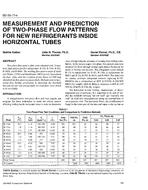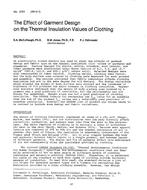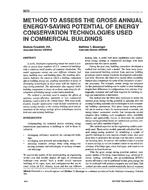Food Service buildings are extremely energy intensive, using about 5 to 7 times more energy per square foot than conventional commercial buildings.Energy intensive commercial kitchen appliances are the primary drivers, often necessitating high exhaust air requirements. Currently, no standardizedmethod exists to directly compare energy efficiency between different Food Service buildings. Different restaurant types have various types of appliances andcooked food throughput requirements and thus it is challenging to make direct comparisons. Past attempts to categorize Food Service use types into”Quick-Service” and “Full-Service” led to the development of the Standard 90.1 prototype building models. However, these models do not address thehighly diverse Food Service use types. This paper proposes a methodology to compare Food Service buildings through an asset rating system. By identifyingall unique systems in a kitchen and creating a common baseline, this methodology identifies approaches for normalizing variations in kitchen requirementsand to compare all Food Service buildings against one another.
Citation: 2018 Annual Conference, Houston, TX, Conference Papers
Product Details
- Published:
- 2018
- Number of Pages:
- 9
- Units of Measure:
- Dual
- File Size:
- 1 file , 940 KB
- Product Code(s):
- D-HO-18-C045


